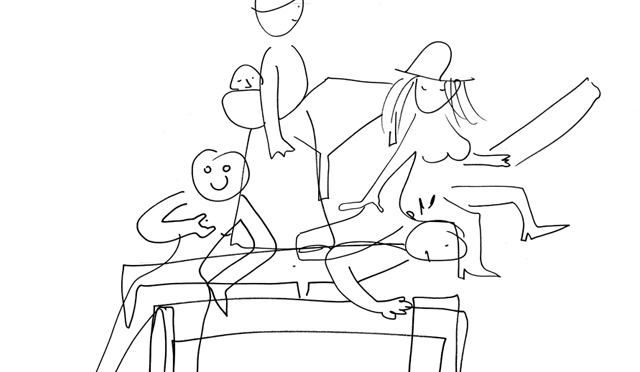Search
To search for an exact match, type the word or phrase you want in quotation marks.
A*DESK has been offering since 2002 contents about criticism and contemporary art. A*DESK has become consolidated thanks to all those who have believed in the project, all those who have followed us, debating, participating and collaborating. Many people have collaborated with A*DESK, and continue to do so. Their efforts, knowledge and belief in the project are what make it grow internationally. At A*DESK we have also generated work for over one hundred professionals in culture, from small collaborations with reviews and classes, to more prolonged and intense collaborations.
At A*DESK we believe in the need for free and universal access to culture and knowledge. We want to carry on being independent, remaining open to more ideas and opinions. If you believe in A*DESK, we need your backing to be able to continue. You can now participate in the project by supporting it. You can choose how much you want to contribute to the project.
You can decide how much you want to bring to the project.

The world is like an endless loop; history repeats itself, with all its achievements and failures. Sisyphus and Groundhog Day are with us all the time. It seems as if the world of creation struggles between originality at all costs and the repetition ad nauseum of subjects and motifs. We’ve dedicated the month of May to the theme of repetition as an artistic resource in order to try and improve our understanding of this dichotomy, and we’ve also considered whether it’s possible to be original repeating the same gestures time and again. We’ve discussed technology, but also analogical and manual work.
In an interview with Carolina Jiménez, Berlin-based artist Ignacio Uriarte exchanged views about work, discipline and techno music. In his case, resource to the repetition of typical office-work gestures and the self-imposition of an administrative sort of rhythm of labour serve to criticise the capitalist system and how it dominates our time. Exaggeration to the point of parody as a form of resistance.
Another artist who made repetition into a system is Omar Schiliro, in the circle of the Rojas Cultural Centre in Buenos Aires. Claudio Iglesias reviewed the retrospective exhibition dedicated to this self-taught underground artist who created a corpus of work that was coherent, precisely on account of its repetitive nature, in just a few years of activity. Infected with HIV, he amused and almost absolved himself with found materials, bric-a-brac and the serial production of willingly tacky objects.
Albert Alcoz proposed a journey through audiovisual techniques that enable repetition, from the oldest to the most recent tools suggested by applications like Instagram that we are all able to use on our mobile phones. Repetition in the service of experimental film but also in that of box-office draws, video clips and artworks.
Along these lines, Marta Ramos-Yzquierdo presented the projects by Cristina Garrido and Ana Esteve Reig, both of which used images disseminated through social networks. Revisiting Walter Benjamin and his reflections on technical reproducibility, these artists bring a new twist to the questions of aura and identity in the age of the Internet.

A*DESK is a critical platform focused on publishing, training, experimentation, communication and dissemination in relation to contemporary culture and art, which is defined by transversality. The starting point is contemporary art, because that is where we come from and this awareness allows us to go much further, to incorporate other disciplines and forms of thought in order debate issues that are relevant and urgent for understanding our present.
"A desk is a dangerous place from which to watch the world" (John Le Carré)